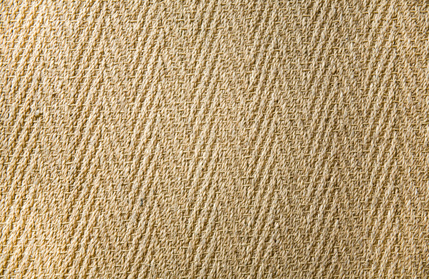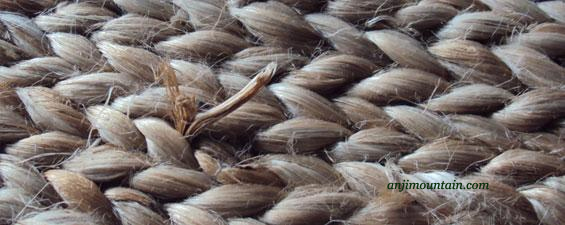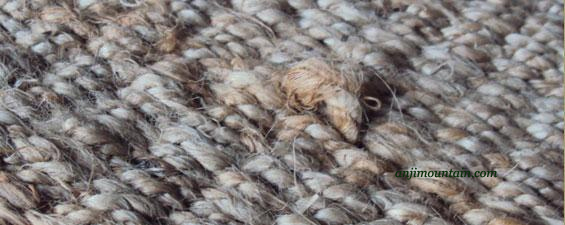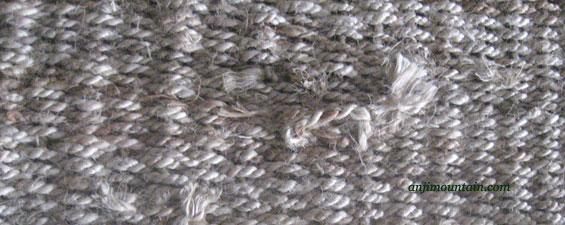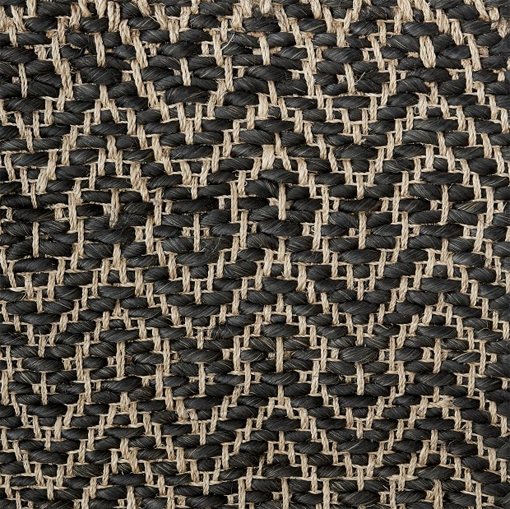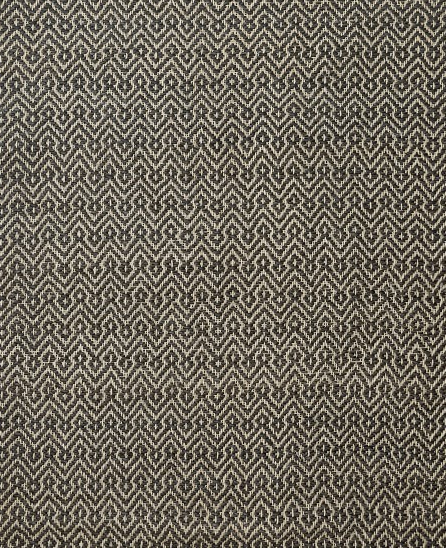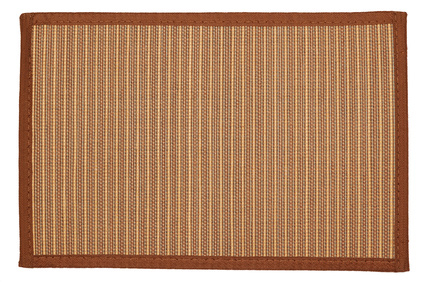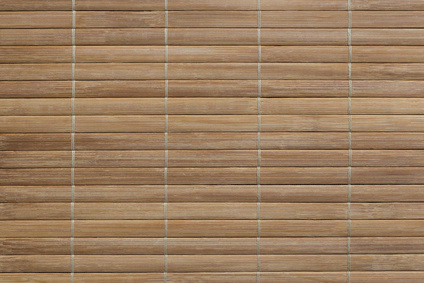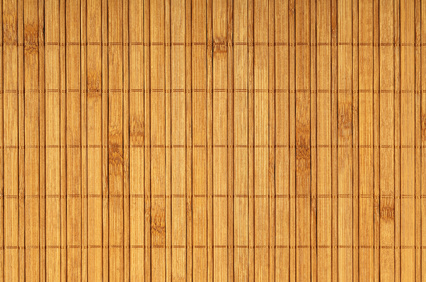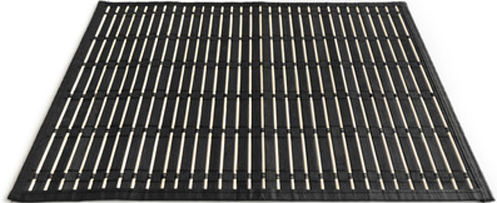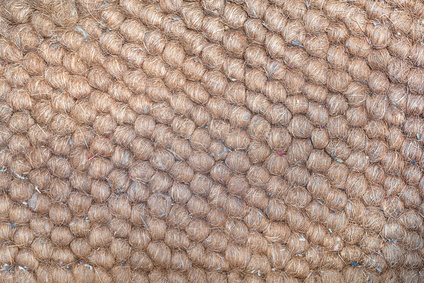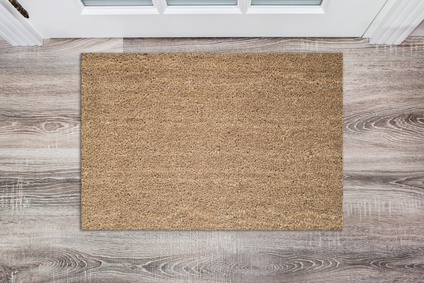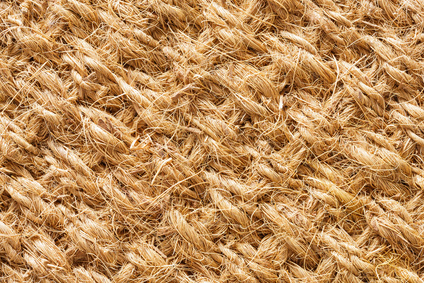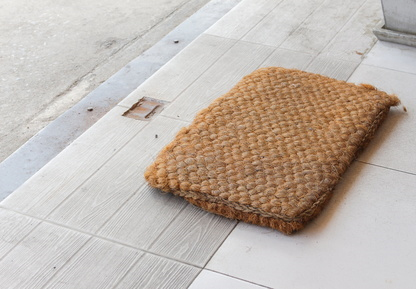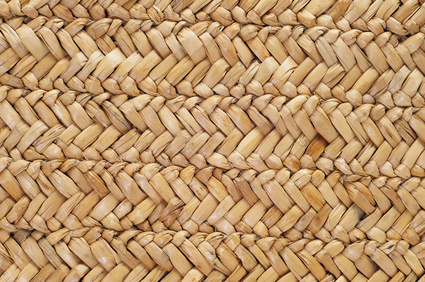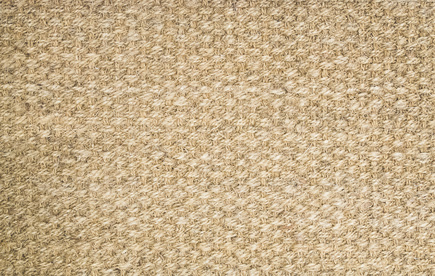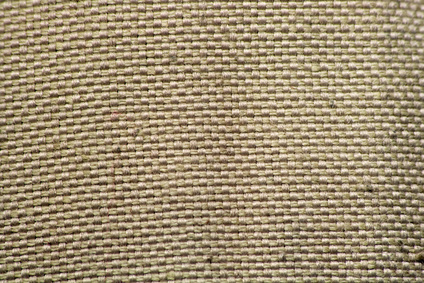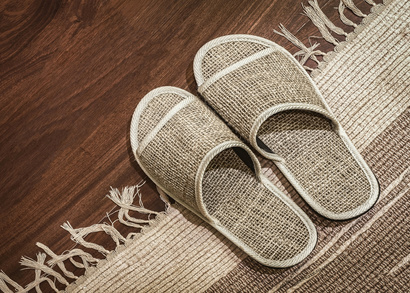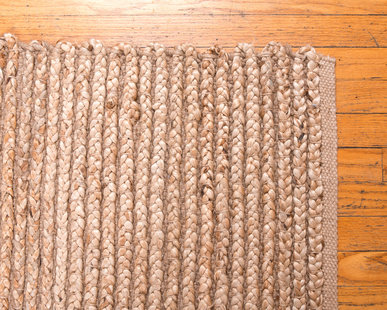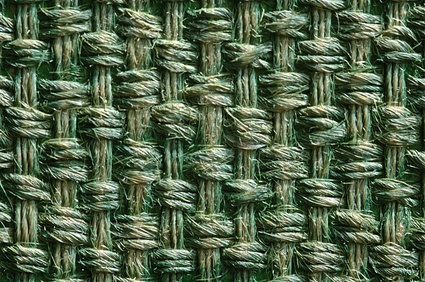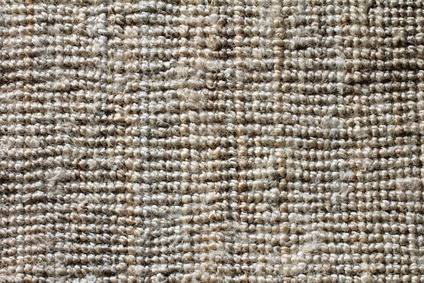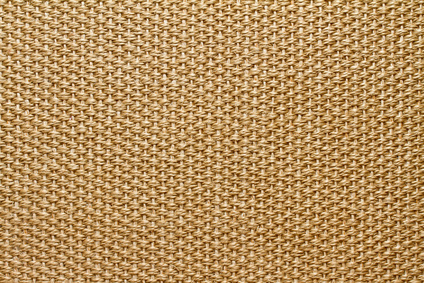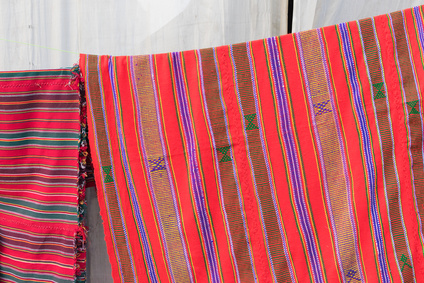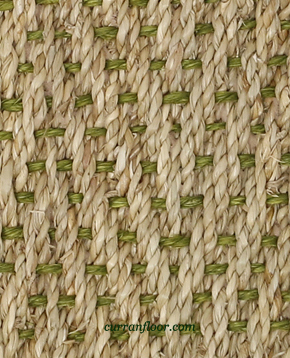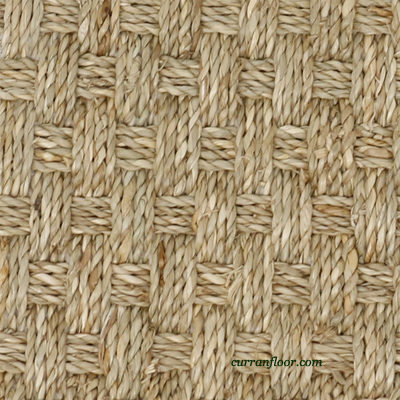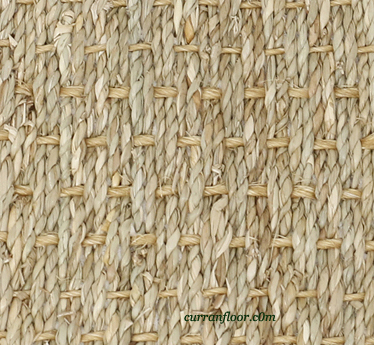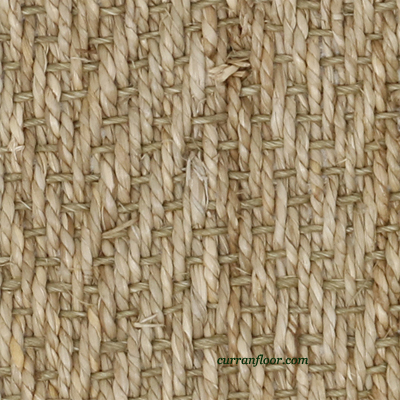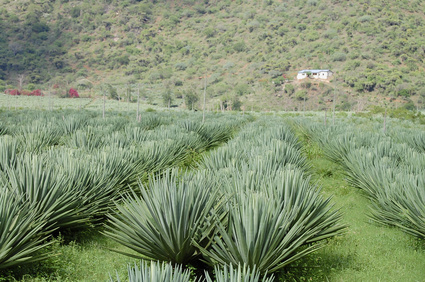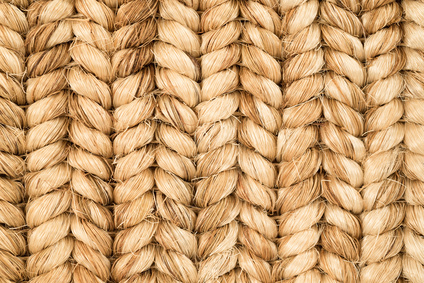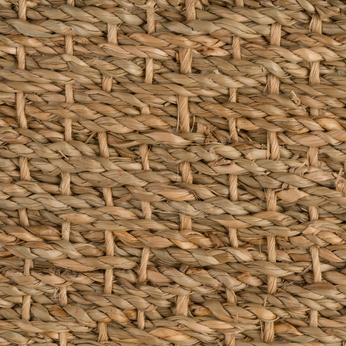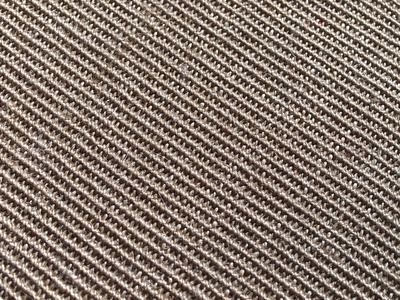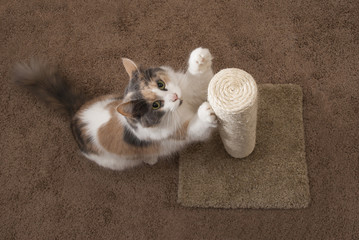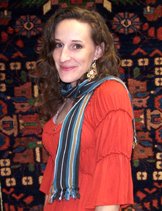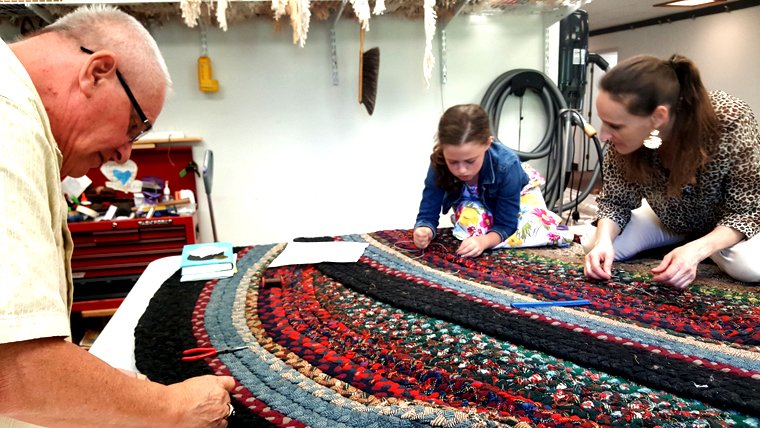NATURAL FIBER RUGS
Natural fiber area rugs offer many distinct advantages as options for floor coverings vs. synthetic fiber rugs or blends. They can bring an earthy texture, warmth, and a natural beauty, as well as a sense of relaxation and calm to our home interiors.
These rugs also speak to the desire to make a more sustainable choice for home furnishings. They can be an understatement and at the same time an elegant addition to any room.
Common natural fiber rugs include Cotton, Leather and other animal skins, Silk, and Wool. For this article we will look at the less common ones which include Abaca, Bamboo, Coir, Hemp, Jute, Seagrass, and Sisal.
Each of the natural fiber rugs has its own pros and cons, but they are very similar in many ways as well. This can lead to a lot of confusion when it comes to making a purchase decision.
ADVANTAGES OF
NATURAL FIBER AREA RUGS
- They are relatively inexpensive.
- They can fit into almost any decorating style.
- They match well with furniture, other rugs, wall colors, and any bold colors.
- They can be layered on top of larger rugs for defining spaces under certain pieces of furniture.
- They are typically made from eco-friendly, renewable resources.
- Most are grown sustainably, requiring small quantities, if any, of pesticides, herbicides or fertilizers, and they are biodegradable.
- Many of them take dyes well and many can be painted.
- Some are naturally flame retardant, anti-static, and noise dampening.
DISADVANTAGES OF
NATURAL FIBER AREA RUGS
(Other Than Wool)
(Please note: Most of the disadvantages listed below do not apply to rugs made of wool fiber. Wool natural fiber is soft, strong, comfortable, stain resistant, anti-static, and naturally flame retardant.)
- Some are not as soft to walk on.
- Most cannot be cleaned like area rugs made of synthetic fibers such as Nylon, Polyester, Olefin, and blends and do not clean up as well.
- Some stain easily and the stains can be very difficult to remove.
- Because they generally do not clean as well as synthetics, they may end up in a landfill sooner, cancelling out their sustainability.
- Exposure to direct, prolonged sunlight will cause most of them to fade.
- Certain rugs have a tendency to shed.
- Some are not durable enough to be in high traffic areas.
- Moisture can quickly deteriorate some of them.
- Some that are braided and sewn by hand can sprout, especially those with shorter fibers, such as Jute, Seagrass, and Sisal. (Simply use scissors to clip the fibers that have stuck out from the surface. After time, the fibers will settle and will require less cutting).
GENERAL CLEANING and MAINTENANCE OF
NATURAL FIBER RUGS
SWEEP UNDERNEATH
For many of these rugs, lifting and removing dust particles from underneath should be done daily. They can also be shaken or even hung up and dusted with a tennis racket or rug beater.
VACUUM
- Regular vacuuming is important for both the cleaning and maintenance of most natural fiber rugs. It is much easier for small pieces of dirt to become entangled in these rugs than in synthetics. These small pieces can be abrasive over time and cause fiber loss.
- Vacuum with soft upholstery attachments only.
- Vacuum from several directions to remove the most debris.
- Avoid vacuuming the stitched areas if the rug has a binding.
HUMIDITY
- Maintain a consistent humidity for those rugs susceptible to moisture.
- Keep moisture sensitive rugs dry. If any areas of a rug susceptible to moisture should get wet, it is of utmost importance it be dried as soon and as completely as possible. If not, the rug may shrink and distort and the corners may curl. (If curling occurs, dampen the curled area with a damp towel placing weights on top. Leave overnight. Repeat may be required).
- Should a rug become over wet, try rolling it up in a dry towel to remove the excess moisture. May have to be repeated or take the rug to a professional rug cleaner to finish the drying process.
SPOTS & SPILLS
- Attend to spots and spills as soon as possible.
- Always test any spotting solution in a small, inconspicuous area of the rug first.
- Always BLOT first, do not rub.
- Combine 1 teaspoon of a mild, non-bleach detergent with 1 teaspoon of white vinegar and then add 2 quarts of lukewarm water OR mix 1 teaspoon of non-bleach detergent with 1 cup of water in a spray bottle. Blot with a clean cloth.
- Oil-based or greasy stains may need a dry cleaning solvent for removal.
- Scrape off any solids with a dull knife first.
- Beer and wine spills should be blotted with a cleaning cloth. Then dampen another cloth with wood alcohol (the alcohol will evaporate quickly without over wetting).
- Spot clean borders with a mild dish soap and water solution.
STAIN PROTECTION
- It may be prudent to have your natural fiber rug professionally treated with a stain protector to prevent permanent stains.
CHOOSE LIGHT OR DARK COLORS FOR BOUND EDGES?
- Light -colored edges easily blend into a room's decor but will show dirt more.
- Dark-colored edges hide dirt but offer limited design options.
OVERVIEW OF NATURAL FIBER RUGS
The following is a general overview of the natural fiber rugs mentioned above, each of which are included in a series of in-depth articles on our website:
ABACA RUGS
- Abaca is a species of inedible banana native to the Philippines. The Abaca tree is sometimes called Manila Hemp or Musa. Abaca is extracted from the layers of overlapping leaf sheaths which form the stalk.
- The Abaca tree is a self-sustaining plant. It matures in 18 to 24 months and can be harvested 3 times per year.
- Durable and strong.
- Thick and soft underfoot.
- 7 colors range from dark brown to white. The white can be dyed to produce any other color.
- It is extremely versatile and used in the production of handbags, hats, shoes, slippers, lamps, rugs, accessories, clothing, furniture, and wall coverings, and even picnic plates, paper, and roofing.
BAMBOO RUGS
- Bamboo is processed from the pulp of the sustainable and fast-growing Bamboo plant.
- Long-lasting and durable.
- Not as soft as other natural fiber rugs.
- Very easy to clean because of the solid surface, but do not over wet, and dry completely.
- Very susceptible to water damage.
- Do not place in direct sunlight.
- 2 basic styles -- wide strip and narrow strip woven. Usually has cloth binding on edges and typically mounted on a felt or a fabric backing.
- Available in various shapes, sizes, and tones.
- Used to make a variety of products.
COIR MATS
- Made from coconut husks and is an eco-friendly renewable source.
- One of the strongest natural fibers. Incredibly durable.
- Extremely coarse and stiff.
- Washes and vacuums easily.
- Naturally water resistant. Protection against salt during cold winter months. Resists bacterial and fungal growth. Dries quickly. Mildew will not have a chance.
- Natural pest repellent, including carpet moths, because of natural oils found inside of Coir fibers.
- Comes in just a few styles and colors.
- Best use is as outside door mats.
HEMP RUGS
- Hemp is grown in the highlands of China, harvested by hand, and woven by machine. Hemp rugs are sometimes known as Mountain Grass rugs.
- Renewable and pesticide and chemical fertilizers-free fiber. Hemp grows up to 150 times faster than trees and yields 4 times as much fiber per acre. Thus, consumption of Hemp products conserves oil and timber resources.
- Naturally durable, hard-wearing, and strong. Stronger than cotton.
- Coarse texture will soften with use.
- Water and mildew resistant,
- Some shedding can be expected.
- Dense heavy weave allows it to lie flat.
- In natural state is a coppery brown hue.
- Can be woven into intricate patterns.
- Nearly ever part of the Hemp plant from stalk to seeds can be utilized for products such as rugs, cosmetics, textiles, fiberboard, etc.
JUTE RUGS
- Jute is grown in Bangladesh, India, and China.
- 2nd most used natural fiber after cotton.
- Stalks of the Jute Corchorus plant are soaked, stripped, and spun before weaving.
- Softest of the natural fiber rugs. They are a bit thicker than others such as Sisal or Seagrass. Sometimes blended with chenille to create a softer rug.
- Least durable of the natural fiber rugs. Lifespan of approximately 5 years. Fibers become brittle as Jute ages, losing its strength.
- Tends to shed quite a bit when new.
- Subject to sprouting because made up of shorter fibers.
- Pet-friendly and cleans relatively easily. Usually just requires a vacuum cleaning. Dust and dirt do not show easily on top of a Jute rug but it can leave fibers on the bottom so remove dust regularly from underneath.
- Very susceptible to mold and mildew so cannot be used in a humid or damp environment such as as bath or as an outdoor welcome mat. Attend to spills and spots as soon as possible. Cannot be steam cleaned. Rug cleaners and spot cleaners may stain or discolor the rug's natural tones. NEVER hose off a Jute rug to clean it! Can stretch out of shape when wet.
- Can be dyed or painted. Will soak up latex, acrylic-based paints and spray paint, especially fabric paint.
- Can easily stretch out of shape in the home if anchored down with heavy furniture.
- Not typically bound on the edges. Can have shaggy edges or loops on one end.
- Continual exposure to sunlight may cause it to fade so rotate rug regularly if in a sunny location.
- Natural colors are typically beige or golden but with natural variation in shades so each one is distinctly different.
SEAGRASS RUGS
- Seagrass is native to India and Sri Lanka.
- Seagrass is a reed grown in marshy areas in Asian countries such as China and Vietnam, usually with the rice in rice fields. When grown in more arid soil, it is called Dragon Grass and will take on a darker color.
- Sustainable because fast growing and easy to harvest.
- Super strong and durable.
- Non-porous. Repels water.
- Typically bound with cotton or leather. Often comes with a latex backing, so is not reversible.
- Subject to sprouting because of shorter fibers.
- Stain-resistant because of its natural coating.
- Fibers are very smooth and possibly slippery so if used on stairs the installation should be with the grain facing parallel to the stair treads.
- Seagrass fibers don't take dye well so the color choices are limited.
- Can be used in high-traffic areas such as entryways, hallways, living rooms, and game rooms.
- Used in wicker furniture because it is strong and common and holds up well over time. Also made into other textiles such as wallpaper.
SISAL RUGS
- Sisal rugs are native to Mexico and America. Major production is from Brazil and East Africa, though it is grown in Central America and farmed sustainably across the world.
- Made from inside the large leaves of the Agave Sisalana plant, a cactus (same one used to make tequila).
- Fibers are strong and stiff. Less comfortable underfoot.
- Best if placed on hard floors because dirt naturally falls through. Should be lifted up and debris swept out from beneath regularly. Small dirt particles can abrade the fibers over time.
- Very susceptible to moisture damage.
- Very susceptible to stains. An anti-stain treatment should be applied. Most stains can be removed with a dry-cleaning solvent.
- Subject to sprouting because of shorter fibers.
- Accepts color well and often dyed.
- Very durable and can be used in high-traffic areas such as hallways and entryways.
- Can become slippery after a lot of wear. Not for use on stairs.
- Also used for cat scratch posts.
ABC CAN HELP
At ABC, we clean every type of area rug, synthetic, natural, and blends. If you have any questions, please call or text us at 607-272-1566.
We are in the office from 8 to 5 Mondays through Thursdays, closing at 4:30 on Fridays. We are also open from 10 to 1 every Saturday.
We also have a free pick up and delivery service. Our turnaround on most rugs is 7 to 10 days.
"The Cleanest Clean You've Ever Seen."
by
ABC Oriental Rug & Carpet Cleaning Co.
130 Cecil Malone Drive Ithaca, NY 14850
607-272-1566
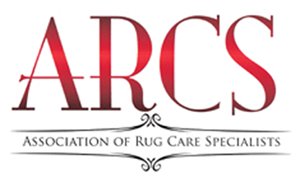
ABC Oriental Rug & Carpet Cleaning Co.
is a FOUNDING MEMBER of the
Association
of Rug Care Specialists.
"To Teach, Cultivate and Advance the Art and Science
of Rug Care"
As of October 1, 2018, we have joined with One Tree Planted.org to help with sustainability and reforestation on our planet by planting trees!
For more information on One Tree Planted.org, please see our article.
Our Press Release can be reached below:
Cleaning Company Announces Partnership with One Tree Planted.org
The Standard of Excellence
